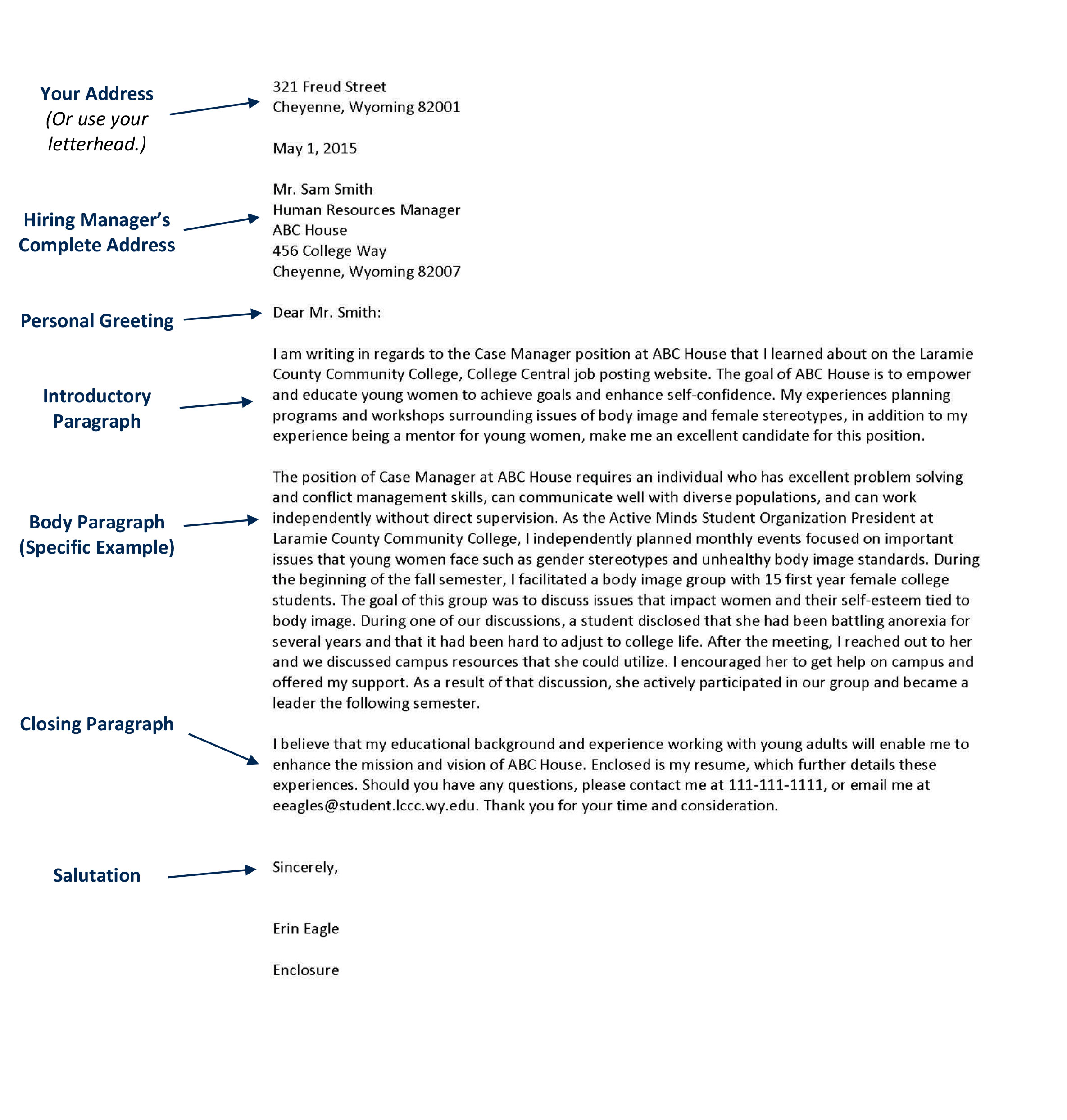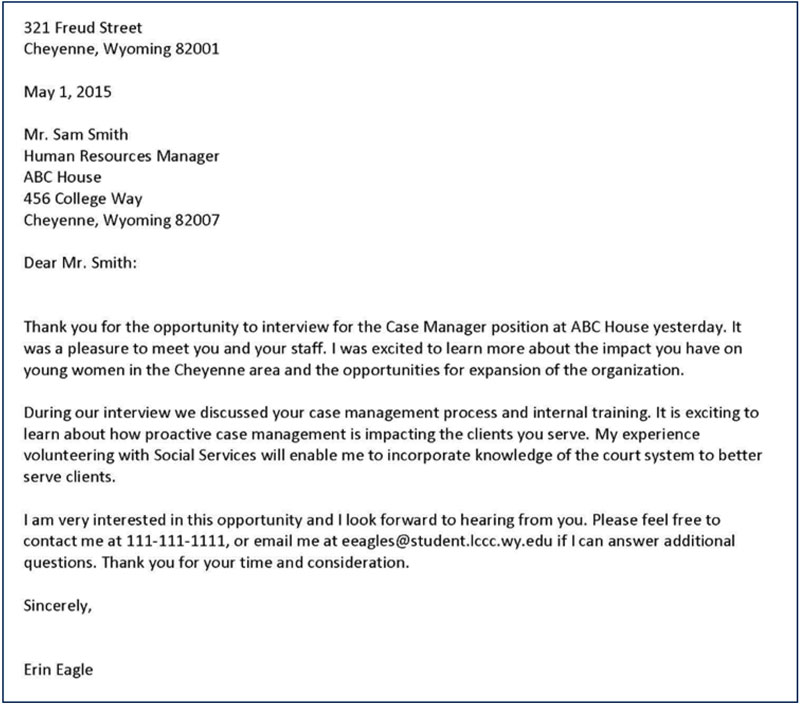Cover Letter 101
The Cover Letter: Your Resume’s Best Friend!
Creating a well-written cover letter is an opportunity for you to share more of your personality and interest in the position and the organization. Cover letters tell your story in a way that your resume cannot. It allows you to highlight skills and experiences that are relevant to the position and demonstrates your written communication style.
Some positions may not require a cover letter as part of their application materials. When in doubt, choose to write the cover letter. A thoughtful and well-written cover letter can increase your chance of standing out in a positive way.
Think of your cover letter as not just a form letter, but a representation of you! Your cover letter needs to be attention grabbing and should contain DIFFERENT information than what you have stated on your resume.
Parts of a Cover Letter
Formatting
- Block formatting: left aligned text with single space paragraphs and double spaces between paragraphs.
- Avoid abbreviations; spell out everything (industry exceptions may apply).
- Do not include personal information such as photos, date of birth, hobbies, ethnicity, and/or religion.
- Be consistent with your margins (1”, 0.7” or 0.5” are the best), font sizes (10-12 pt.), and professional fonts (Times New Roman, Arial, Calibri, or Cambria).
Introductory Paragraph
- Use a personal greeting
Avoid using a generic greeting like “To Whom it May Concern”— try to find the name of the actual hiring manager by calling the Human Resources office (unless stated otherwise on the application) or use “Hiring Manager” if you cannot obtain an actual name. - Do your research
The first paragraph should contain the following:
- The specific title of the position and how you heard about the opening.
- If you have a personal connection to the organization.
- Why you are writing—give a brief introduction as to why you would be a good candidate for the job and why you are interested in working for the organization/company.
Body Paragraph(s)
- Provide specific example(s)
The body paragraph is an opportunity for you to provide a specific example from your experiences that highlights skill(s) within the job description. Think of this section as if the employer asked you an interview question: “Give me an example of a time you…”
Closing Paragraph
- Restate your interest in the position
Thank them for their time and consideration.
Communicate next steps.
Include your phone number (with area code) and email address.
- Use a professional closing salutation such as “Sincerely” or “Respectfully”
Cover Letter Dos and Don’ts
| Do | Don’t |
|---|---|
| Show your personality by sharing why you are interested in the organization/position and giving specific examples that highlight main skills required for the position. | Restate your resume or copy a cover letter sample verbatim. Remember cover letters should be unique and customized. |
| Proofread your letter to ensure it is error-free. | Write your cover letter 15 minutes before submitting your application without proofreading. |
| Submit the file as a PDF (unless otherwise stated in the application) and include your name in the document title. If printing your letter print on paper that matches your resume. | Submit as a Word document if given a choice to save as a PDF. A Word document’s formatting can change depending upon what Word version you create it in and what version the employer uses. |
| Use block formatting (left-aligned text with double spaces between paragraphs). | Format your cover letter double-spaced each line like an English paper. Cover letters are formal and should be in block formatting. |
| Use a personal greeting by finding out the name of the hiring official. | Address your letter “To Whom it May Concern.” |
Questions to Help You Get Started
- Why are you interested in this field and in this job specifically?
- What are the top two skills for this position?
- What is a specific experience where you used at least one of the above skills?
- Are there any possible “red flags” on your resume or application? (E.g.: job gaps, short term jobs, location changes.)

Thank You Letters
Thank you letters help you reaffirm your interest in the position. Here are some key strategies for writing thank you letters:
- Send thank you letters within 24-48 hours of your interview
- Emailing a thank you letter is acceptable as long as it is professional
- Use block formatting just like a cover letter
- Print on paper that matches your resume and cover letter, or use a formal thank you card (don’t handwrite it if your handwriting can be difficult to read)
- Proofread and check for spelling errors
- Be consistent with your margins (1”, 0.7” or 0.5” are the best), font sizes (10-12 pt.), and professional fonts (Times New Roman, Arial, Calibri, or Cambria)
Parts of a Thank You Letter
 Introductory Paragraph
Introductory Paragraph
- Indicate the date and location of the interview.
- Restate the specific title of the position.
- Mention something specific you discussed from your conversation with the interviewer.
Body Paragraph
- Use specific, brief examples to highlight skills that were discussed in the interview or share additional relevant information.
Closing Paragraph
- Restate your interest in the position
- Thank the interviewer for their time and consideration
- Include your phone number (with area code) and email address.
